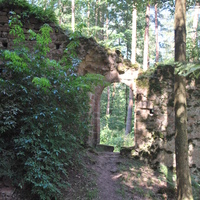
Winfried Held
Related Authors
Mustafa Sahin
Uludag University
Celil Samet Harmandar
Ege University
oktay dumankaya
Kahramanmaras Sutcu Imam Univ.
Gil Gambash
University of Haifa
Annick Payne
Università Ca' Foscari Venezia
Mirko Novák
Bern University
Amy Raymond
Diablo Valley College
Julien Zurbach
École Normale Supérieure
InterestsView All (6)









Uploads
Papers by Winfried Held
Doric Hexapolis dedicated to Apollon Triopios: either in Knidos-Tekir or in the sanctuary of Emecik in the east of the Knidian peninsula. In doing so the researchers working at the respective sites use to identify their excavation with both Old Knidos and the Triopion: the ones place both at Cape Krio/Tekir, the others in Burgaz and Emecik. A critical review of the respective arguments and a fresh view of the archaeological finds and contexts clear the way towards an interpretation that solves all former problems.
During the Hellenistic period, this Rhodian building technique appears in southern Karia at three temples which have not yet received attention in architectural history. They all belong to the mainland possessions of Rhodos, the “Rhodian Peraia”. In the 3rd century BC, two temples in the Karian Chersonesos which was part of the “integrated Peraia”, adopted the Rhodian construction technique: the Apollon temple in Loryma and the Apollon Samnaios temple in Amos, both in Doric order. The Rhodian Peraia has later been extended further to the “subjected Peraea”, and in the 2nd century BC also included Kaunos. At that time, the “Corinthian temple” has been erected there, again in the described Rhodian technique but in the, at that time, still rather new and rarely used Corinthian order.
Along with the material, formal influences from Rhodes at these temples include the Doric order in Loryma and Amos, and the stepped recesses at the krepis blocks attested in Amos. Apart from that they follow Karian traditions unknown in Rhodos. The temples in Amos and Kaunos show a rather peculiar feature with Ionic columns in antis, i.e. of another order than that of the respective peristasis. This has parallels in Kastabos, Lagina, and the Letoon of Xanthos. So the Hellenistic temples of Karia were deeply rooted in the building tradition of southwestern Asia Minor, but open to adopt certain features from Rhodes, often in an experimental manner.
Doric Hexapolis dedicated to Apollon Triopios: either in Knidos-Tekir or in the sanctuary of Emecik in the east of the Knidian peninsula. In doing so the researchers working at the respective sites use to identify their excavation with both Old Knidos and the Triopion: the ones place both at Cape Krio/Tekir, the others in Burgaz and Emecik. A critical review of the respective arguments and a fresh view of the archaeological finds and contexts clear the way towards an interpretation that solves all former problems.
During the Hellenistic period, this Rhodian building technique appears in southern Karia at three temples which have not yet received attention in architectural history. They all belong to the mainland possessions of Rhodos, the “Rhodian Peraia”. In the 3rd century BC, two temples in the Karian Chersonesos which was part of the “integrated Peraia”, adopted the Rhodian construction technique: the Apollon temple in Loryma and the Apollon Samnaios temple in Amos, both in Doric order. The Rhodian Peraia has later been extended further to the “subjected Peraea”, and in the 2nd century BC also included Kaunos. At that time, the “Corinthian temple” has been erected there, again in the described Rhodian technique but in the, at that time, still rather new and rarely used Corinthian order.
Along with the material, formal influences from Rhodes at these temples include the Doric order in Loryma and Amos, and the stepped recesses at the krepis blocks attested in Amos. Apart from that they follow Karian traditions unknown in Rhodos. The temples in Amos and Kaunos show a rather peculiar feature with Ionic columns in antis, i.e. of another order than that of the respective peristasis. This has parallels in Kastabos, Lagina, and the Letoon of Xanthos. So the Hellenistic temples of Karia were deeply rooted in the building tradition of southwestern Asia Minor, but open to adopt certain features from Rhodes, often in an experimental manner.